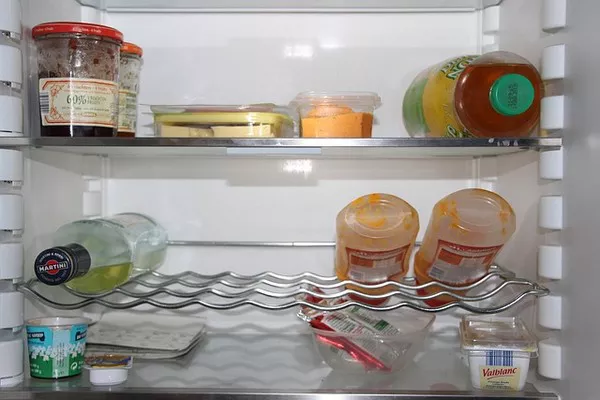Refrigeration systems are a cornerstone of modern comfort and convenience, playing a crucial role in industries ranging from food preservation to climate control. The functionality of these systems hinges on a well-structured sequence of operations that govern the refrigeration cycle. This article delves into the intricate order of operations within a refrigeration system, elucidating each stage’s purpose and mechanisms.
Introduction to Refrigeration Systems
A refrigeration system is designed to remove heat from a designated area and transfer it to another, thereby cooling the initial space. This process relies on the principles of thermodynamics and heat transfer, facilitated by a refrigeration cycle. The cycle involves four main components: the compressor, condenser, expansion valve, and evaporator. Understanding the sequence in which these components operate is essential for grasping how refrigeration systems function.
The Refrigeration Cycle: An Overview
The refrigeration cycle is typically illustrated as a closed-loop system where refrigerant circulates continuously. This cycle can be divided into four key stages:
- Compression
- Condensation
- Expansion
- Evaporation
Each stage plays a pivotal role in transforming the refrigerant’s state and facilitating heat exchange.
Stage 1: Compression
The cycle begins at the compressor, which is often considered the heart of the refrigeration system. The compressor’s primary function is to increase the pressure and temperature of the refrigerant gas. This is achieved by compressing the low-pressure refrigerant vapor from the evaporator, converting it into a high-pressure, high-temperature gas.
Purpose: The increase in pressure and temperature prepares the refrigerant for efficient heat rejection in the next stage.
Mechanism: Compressors can be of various types, including reciprocating, rotary, screw, and centrifugal, each suited for different applications based on efficiency and capacity.
Stage 2: Condensation
The high-pressure, high-temperature refrigerant gas then flows into the condenser. The condenser’s role is to dissipate the heat absorbed from the evaporator to the surrounding environment, typically through air or water.
Purpose: To convert the high-pressure refrigerant gas into a high-pressure liquid by removing its heat content.
Mechanism: As the refrigerant passes through the condenser coils, it releases heat, causing it to condense into a liquid. The condenser is often equipped with fans or cooling water to enhance the heat dissipation process.
Stage 3: Expansion
Following condensation, the high-pressure liquid refrigerant moves to the expansion valve. The expansion valve acts as a throttling device, causing a significant drop in the refrigerant’s pressure and temperature as it flows through.
Purpose: To reduce the pressure and temperature of the refrigerant to prepare it for heat absorption in the evaporator.
Mechanism: The expansion valve can be a thermal expansion valve (TXV), capillary tube, or an electronic expansion valve, each providing precise control over the refrigerant flow.
Stage 4: Evaporation
The low-pressure, low-temperature refrigerant then enters the evaporator, where it absorbs heat from the area to be cooled. This absorption of heat causes the refrigerant to evaporate, turning it back into a low-pressure vapor.
Purpose: To absorb heat from the desired space, thus providing the cooling effect.
Mechanism: The evaporator consists of coils or fins that facilitate efficient heat transfer. Fans may be used to enhance the airflow over the evaporator surface, improving the heat absorption process.
The Role of Refrigerants
Refrigerants are the lifeblood of the refrigeration cycle, responsible for transporting heat through the system. Common refrigerants include ammonia (R-717), carbon dioxide (R-744), and various hydrofluorocarbons (HFCs) like R-134a. The choice of refrigerant impacts the system’s efficiency, environmental footprint, and operational safety.
Additional Components and Considerations
While the four main stages and components outline the primary refrigeration cycle, additional elements and considerations ensure the system’s optimal performance and safety.
Accumulator: Protects the compressor from liquid refrigerant that could cause damage.
Receiver: Stores excess refrigerant and ensures a steady supply to the expansion valve.
Filter Dryer: Removes moisture and contaminants from the refrigerant to prevent system blockages and corrosion.
Pressure Controls: Monitor and regulate the system’s pressure to maintain operational safety and efficiency.
Superheating and Subcooling: These processes ensure the refrigerant is in the correct state before entering the next component, enhancing system efficiency and protecting components.
Energy Efficiency and Environmental Impact
Modern refrigeration systems emphasize energy efficiency and environmental sustainability. Advances in compressor technology, variable-speed drives, and improved heat exchanger designs contribute to lower energy consumption. Additionally, the industry is shifting towards refrigerants with lower global warming potential (GWP) to mitigate environmental impact.
Applications of Refrigeration Systems
Refrigeration systems are ubiquitous across various sectors:
Residential: Air conditioning and household refrigerators.
Commercial: Supermarket refrigeration, commercial air conditioning, and ice rinks.
Industrial: Cold storage warehouses, food processing plants, and chemical manufacturing.
Transportation: Refrigerated trucks, ships, and railcars for perishable goods.
Maintenance and Troubleshooting
Regular maintenance is critical for the longevity and efficiency of refrigeration systems. Key maintenance tasks include:
Cleaning Coils: Ensures optimal heat transfer.
Checking Refrigerant Levels: Prevents inefficiencies and potential damage.
Inspecting Electrical Components: Ensures reliable operation.
Monitoring System Pressures and Temperatures: Detects potential issues early.
Common troubleshooting issues include refrigerant leaks, compressor failures, and electrical faults. Addressing these promptly can prevent costly repairs and downtime.
See Also How Does A Heat Pump Resemble A Refrigeration System
Conclusion
The order of operations in a refrigeration system is a meticulously orchestrated sequence designed to transfer heat effectively and efficiently. Each stage, from compression to evaporation, plays an indispensable role in the refrigeration cycle, enabling the system to provide cooling across diverse applications. As technology evolves, refrigeration systems continue to improve in efficiency and environmental friendliness, underscoring their vital role in modern society.
Understanding the intricate workings of these systems not only highlights the marvel of engineering behind everyday conveniences but also underscores the importance of maintaining and advancing this critical technology.

